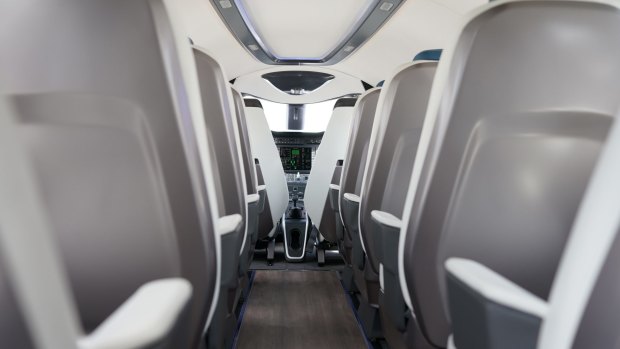This was published 4 years ago
Modern commercial aircraft vs cars: which is more fuel efficient?

Open-plan cockpit of an 'Alice' electric aircraft manufactured by Eviation Aircraft.Credit: JASPER JUINEN
A Boeing 787-9 burns about 5400 litres of fuel per hour. At a cruising speed of 900km/h, that equates to 600 litres/100km. On average, a modern family-size vehicle uses about 8 litres/100km, or 75 times less fuel. If there are four people inside that vehicle, each one accounts for 2 litres/100km, and the fuel consumption per passenger per kilometre aboard the 787-9 is very similar.
A fully loaded 787-9 carries about 300 passengers, therefore fuel consumption per passenger is 18 litres per passenger per hour. Travelling at a ground speed of 900km/h, each passenger is covering 50km/litre, or 2 litres/100km. That assumes the aircraft is flying with a full passenger load. A more realistic passenger load is 90 per cent, in which case fuel consumption per passenger is 2.2 litres/100km.
Conversely, if the vehicle is travelling with three aboard instead of four, fuel consumption for each is 2.66 litres/100km. Aircraft engines continue to deliver better fuel efficiency. For a fully loaded Boeing 747-8, the most recent passenger version, the figure per passenger is 2.39litres/100km, one of the main reasons the four-engine jumbo is fading from the skies.
Sign up for the Traveller newsletter
The latest travel news, tips and inspiration delivered to your inbox. Sign up now.